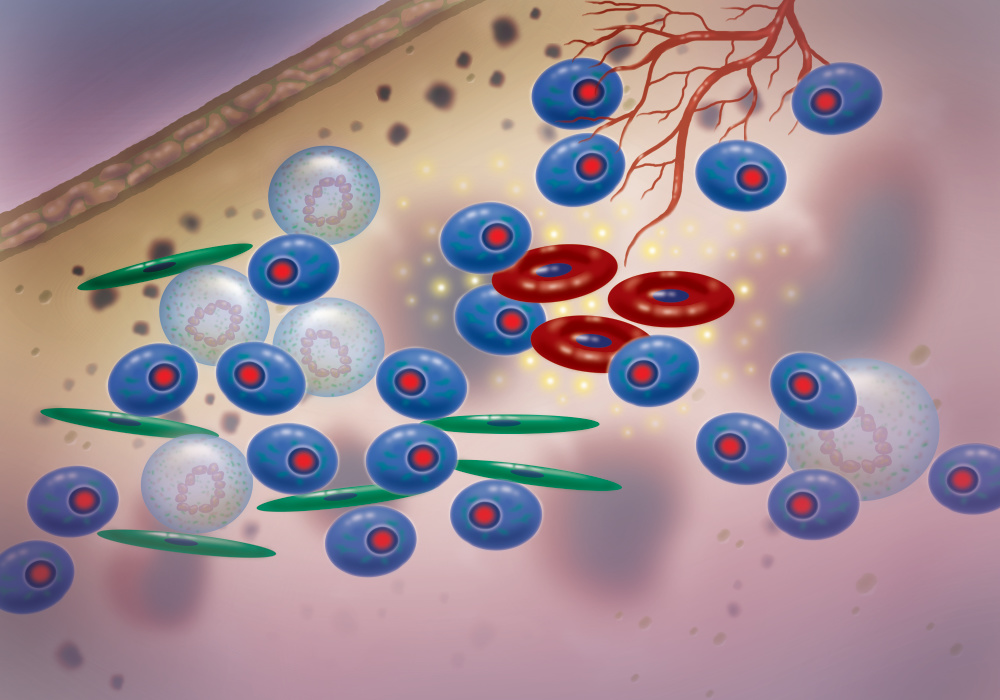
Thanks to major advances in treatment in recent years, patients diagnosed with multiple myeloma today have a much greater life expectancy, even though the blood cancer isn’t curable. It’s possible to think of myeloma – a malignancy affecting antibody-producing immune cells – as a chronic disease with which some individuals can live for many years.
Myeloma requires dedicated, expert care by multidisciplinary teams to manage symptoms and treatment complications that affect myeloma patients, many of whom are older when diagnosed and often have other health problems. In addition to oncologists with expertise in myeloma, comprehensive care may include nurse practitioners, orthopedic specialists, cardiologists, psychologists, social workers, dentists, and nutritionists.
“These patients are living a long time now, but they are on continuous treatment, and it’s up to us to manage the symptoms and optimize their quality of life,” says Kimberly Noonan, NP, who sees patients in the Jerome Lipper Multiple Myeloma Center. “A lot of it is for us to listen to patients when they tell us what they are willing to put up with in terms of symptoms, and we want to find a drug dosage that they can live with.”
Typically, a newly diagnosed patient receives a combination of drugs, such as bortezomib (Velcade), lenalidomide (Revlimid), and dexamethasone, followed by maintenance therapy with one drug, often lenalidomide. When relapse occurs, treatment is intensified. Treatment of myeloma often involves stem cell transplants at some point during the course of the disease.

Side Effects and Symptoms
The same drugs that are prolonging survival in myeloma patients can cause side effects as well. One of the most troublesome adverse effects of the drug combination, and most often specifically related to bortezomib, is peripheral neuropathy — damage to nerves in the extremities — causing loss of sensation and, in some cases, pain. “Every patient has different levels of neuropathy and what they can tolerate,” Noonan says.
Both the disease and its treatments cause an array of symptoms, including bone pain, nausea, diarrhea, constipation. Fatigue is also very common, and when it is severe, the drug dosage may be reduced.
Bisphosphonate drugs administered to offset the destruction of bone in myeloma patients, can in rare instances, damage the teeth or jawbone through a process referred to as osteonecrosis; for this and other reasons, patients are advised to be closely monitored and treated by dentists and maintain good dental hygiene.
As with any chronic medical condition, patients affected by myeloma face uncertainty about the long-term status of their condition and may struggle with anxiety and depression. Psychologists and social workers “can really be very helpful,” says Noonan.
Whatever the challenges facing patients and care teams, the fact is that more people with myeloma are living longer. Experts say survival will continue to improve with deeper understanding of the disease and development of new treatments.
“People still die of myeloma, but our research at Dana-Farber and other centers brought the treatment of this disease to a level no one would have ever thought possible,” says Noonan.
